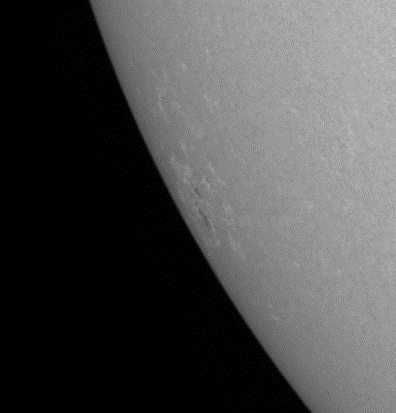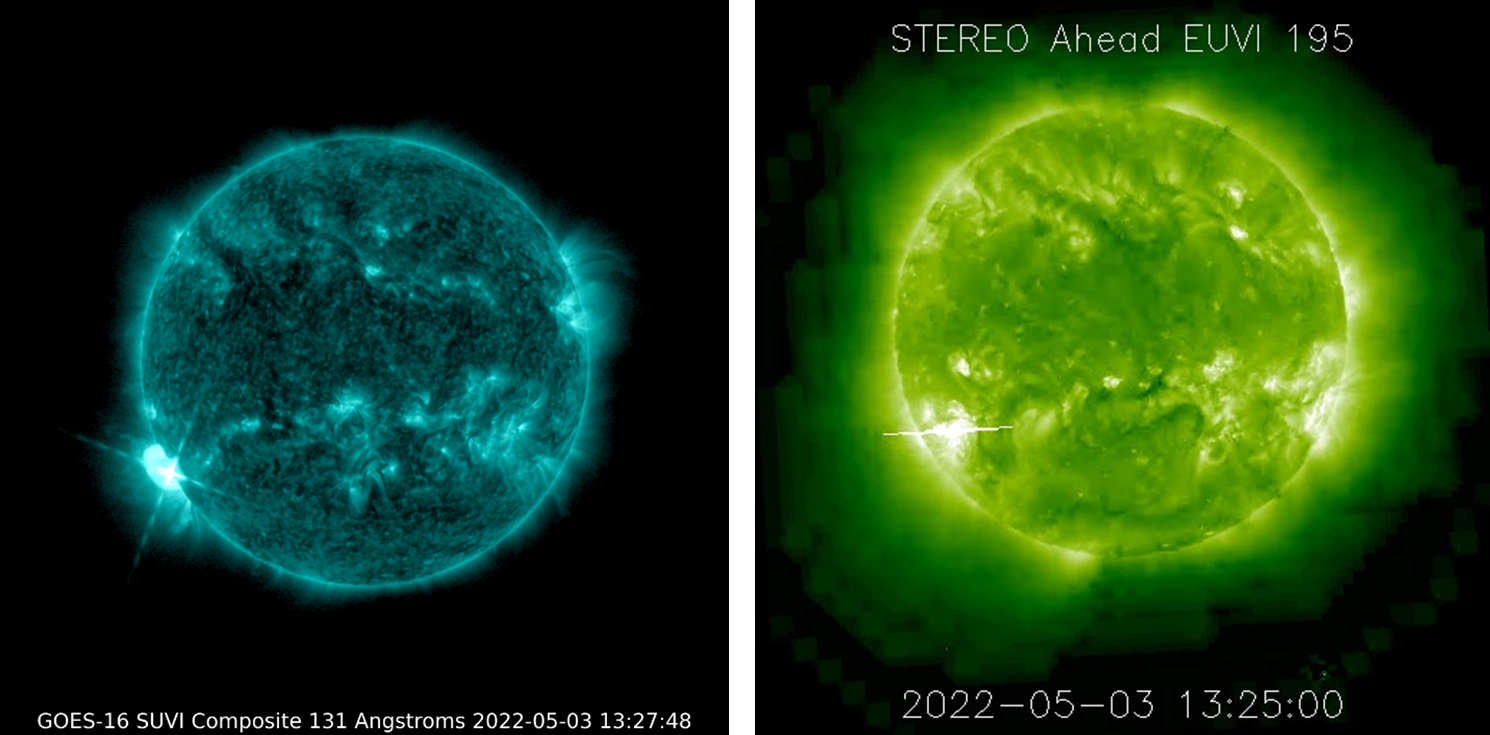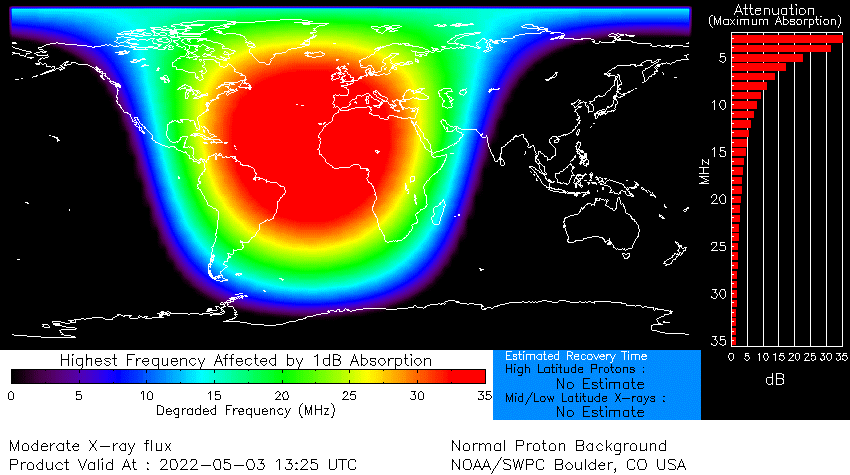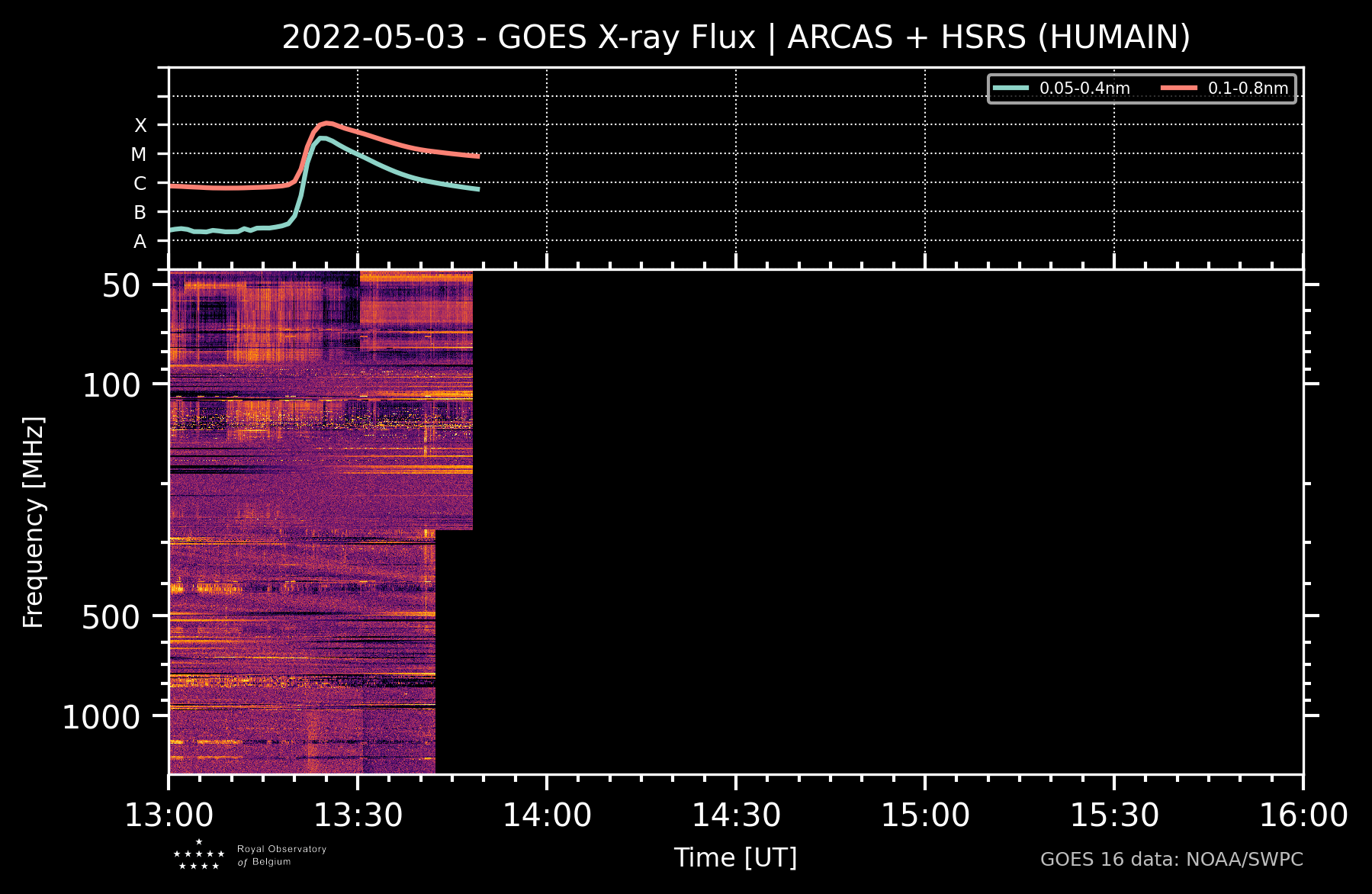An X1.1 flare was observed on 3 May at 13:25UT. It originated from a region which is currently rounding the southeast solar limb, and has not received a NOAA number yet. The white light image underneath (SDO/HMI) shows the sunspot region at 11:25UT. This region was also responsible for an M-class flare earlier today.

Imagery in extreme ultraviolet were provided by GOES SUVI 131 in its geostationary orbit, and by STEREO-A/EUVI 195 which is trailing the Earth by about 30 degrees. They can be found underneath.

As the x-ray emission of the flare affects the inner portion of Earth's ionosphere, radio blackouts at high frequencies were most likely experienced over the Atlantic, West-Europe, West-Africa, and the northeast of South-America (map DRAP).

The eruption does not seem to be associated with strong radio emission (Humain Radioastronomy Station in Belgium). In view if its location, any associated coronal mass ejection (if any) is unlikely to have an earth-directed component.

Being so close to the limb, it is very difficult to make an assessment of the magnetic structure of the region, and thus of its flaring potential. In view of the flares already produced so far, further M-class flares can be expected with a chance on another X-class flare. Further updates can be found at the SIDC website.





